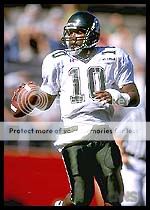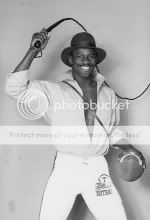The End
I had planned a farewell message- but even thinking about it seemed maudlin. I have nothing more to say.
Thanks for reading. Thanks for participating.
And now, I'm off to the bar at Tujague's. See you around friends.
I had planned a farewell message- but even thinking about it seemed maudlin. I have nothing more to say.
 Tooling around Tulane’s recent football history, I was struck by how generationally Tulane hits utter rock-bottom. First, Tulane has the end of the utterly uncompetitive SEC era- from 1957-1965, Tulane never won more than one SEC game in a given season. Second, the Green Wave suffered the horrid collapse of the the English regime in the seventies, followed in the 90s by the incompetent Buddy Teevens (11-45).
Tooling around Tulane’s recent football history, I was struck by how generationally Tulane hits utter rock-bottom. First, Tulane has the end of the utterly uncompetitive SEC era- from 1957-1965, Tulane never won more than one SEC game in a given season. Second, the Green Wave suffered the horrid collapse of the the English regime in the seventies, followed in the 90s by the incompetent Buddy Teevens (11-45).Labels: Tulane
Looking back at the Mack Brown orchestrated renaissance of mid-80s Tulane football, I am struck at how some things never change. He rebuilt Texas the exact same way- an emphasis on mobile, athletic quarterbacks and oodles of receiving talent.
 Is that a groan I hear? This community has not taken well to ancient Tulane star players.
Is that a groan I hear? This community has not taken well to ancient Tulane star players.Labels: Tulane Top 25 Players
These guys were on my short list- but ultimately did not make the cut:
Labels: Tulane Top 25 Players
Almost as quickly as the Bowden miracle happened, it ended even quicker.
 Patrick Ramsey came to Tulane in 1997 as an odd recruit. He was a track and field star- already by 18, one the great javelin throwers in the history of US track-and-field, the holder of an actual medal at the Pan Am Games. He played football as an afterthought- and it took personal lobbying by Louisiana State great Bert Jones to get Ramsey into Tulane very late.
Patrick Ramsey came to Tulane in 1997 as an odd recruit. He was a track and field star- already by 18, one the great javelin throwers in the history of US track-and-field, the holder of an actual medal at the Pan Am Games. He played football as an afterthought- and it took personal lobbying by Louisiana State great Bert Jones to get Ramsey into Tulane very late.Labels: Tulane Top 25 Players
Part of putting together this list is realizing the 1998 campaign was no miracle. It was not a series of inexplicable events. It can be rationalized.
 Shaun King is the MVP of Tulane football of the past 25 years. I honestly don’t think there is disputing that. He leveraged the aforementioned mental, physical and emotional tools in to a great two year run. That same two year run probably generated the sufficient good will to allow athletics to survive the betrayal that was Cowen’s secret athletic review.
Shaun King is the MVP of Tulane football of the past 25 years. I honestly don’t think there is disputing that. He leveraged the aforementioned mental, physical and emotional tools in to a great two year run. That same two year run probably generated the sufficient good will to allow athletics to survive the betrayal that was Cowen’s secret athletic review.King… had a pass efficiency rating of 183.3, which broke the NCAA single season record of 178.8 set by Danny Wuerffel. King completed 68 percent of his passes (223-of-328) to go along with 36 touchdowns and just six interceptions…. also became the first player in Division 1 A history to pass for 3,000 years (3,232) and rush for 500 (532) in an 11-game season. King finished the regular season with 168 consecutive pass attempts without an interception.The other important point about King is that Tulane was not a perfect offense in 1998. There weren’t many great players- only one other offensive teammate made first team all C-USA (Bernard Robertson), and no skill player did. Even King’s raw ability wasn’t off the charts; his eventual NFL professional play showed the limits of his frame and arm.
Labels: Tulane Top 25 Players
In the 1980s, the college game never did commit as completely to the forward pass culture as the NFL: the pass interference rule is still less draconian, defensive backs still get away with more, there simply aren’t enough high quality quarterbacks and available practice time to master the true NFL passing offense.
 As the nation watched Vince Young run and throw all over the place, and announcers lauded Greg Davis to the sky for the unique, intelligent package given to Young to run, the late 1980s Tulane undergraduate was forced to remark we’d seen all those same plays, those same looks, before. All Brown and Davis had to do was load Tulane game film from 1987, show it to Young, and say “Do that”.
As the nation watched Vince Young run and throw all over the place, and announcers lauded Greg Davis to the sky for the unique, intelligent package given to Young to run, the late 1980s Tulane undergraduate was forced to remark we’d seen all those same plays, those same looks, before. All Brown and Davis had to do was load Tulane game film from 1987, show it to Young, and say “Do that”. And the charismatic Jones (the Louisiana Jones and the Dome of Doom football poster is still the best ever) was part and parcel of that argument. As stupid prejudices against African-American quarterbacks declined, the athleticism of the position went up. The successful Jones and Brian Mitchell became prototypes for mobile yet good passers: Andre Ware, Rodney Peete, Brett Favre and Randall Cunningham.
And the charismatic Jones (the Louisiana Jones and the Dome of Doom football poster is still the best ever) was part and parcel of that argument. As stupid prejudices against African-American quarterbacks declined, the athleticism of the position went up. The successful Jones and Brian Mitchell became prototypes for mobile yet good passers: Andre Ware, Rodney Peete, Brett Favre and Randall Cunningham. Labels: Tulane Top 25 Players